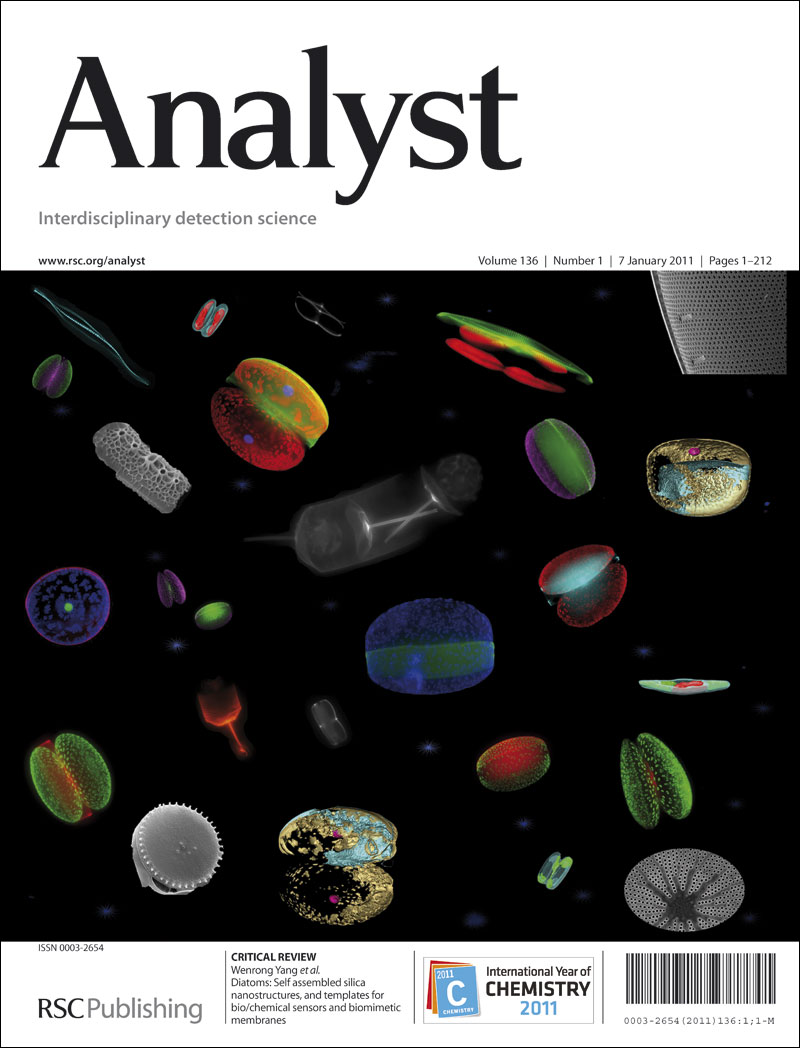High-throughput DeepPRM-Stellar proteomics coupled with machine learning enables precise quantification of atherosclerosis-stroke progression biomarkers and risk prediction
IF 3.3
3区 化学
Q2 CHEMISTRY, ANALYTICAL
引用次数: 0
Abstract
Predicting the progression of asymptomatic large-artery atherosclerosis (LAA) to acute ischemic stroke (AIS) remains a significant challenge when relying solely on anatomical stenosis. To address this clinical gap, we integrated discovery-phase serum proteomics with machine-learning techniques to identify circulating biomarkers capable of predicting atherosclerotic progression. Utilizing a dual-cohort design (Cohort I: discovery stage, n = 43; Cohort II: validation stage, n = 39), we established a Serum Protein Candidate Biomarker Bank (SPCBB) encompassing 1,484 proteins by harmonizing literature-derived evidence (1369 proteins) with 222 differentially expressed proteins (DEPs) identified through mass spectrometry analysis. Global proteomics revealed that LAA-associated proteins were enriched in cholesterol metabolism, whereas AIS was characterized by the activation of complement/coagulation cascades. We performed targeted validation of 171 peptides (corresponding to 156 proteins) using DeepPRM on the Stellar platform, thereby facilitating machine learning-based optimization of the biomarker panel. The XGBoost algorithm identified two diagnostic signatures: a three-protein panel (RNASE4, HBA1, ATF6B) that differentiates AIS from LAA, with an area under the curve (AUC) of 0.917 and specificity of 80.0%; and a six-protein panel (MRC1, HBA1, GUC2A, HBD, CLEC3B, FLNA) that distinguishes AIS/LAA from healthy controls, achieving an AUC of 0.971 and specificity of 86.0%. To further validate key candidates, we performed ELISA assays for GUCA2A and FLNA, which confirmed their significant elevation in patients with AIS and LAA (p < 0.01), consistent with the proteomics findings. Both internal and external validations confirmed robust performance across cohorts. These validated biomarker panels establish a proteomics-driven framework for serum-based, dynamic monitoring of LAA progression, thereby supporting clinical decision-making aimed at optimizing early stroke prevention in asymptomatic individuals.高通量DeepPRM-Stellar蛋白质组学与机器学习相结合,可以精确量化动脉粥样硬化-中风进展生物标志物和风险预测
预测无症状大动脉粥样硬化(LAA)到急性缺血性脑卒中(AIS)的进展仍然是一个重大的挑战,当仅仅依靠解剖狭窄。为了解决这一临床空白,我们将发现阶段的血清蛋白质组学与机器学习技术相结合,以确定能够预测动脉粥样硬化进展的循环生物标志物。采用双队列设计(队列1:发现阶段,n = 43;队列II:验证阶段,n = 39),通过将文献证据(1369个蛋白)与通过质谱分析鉴定的222个差异表达蛋白(DEPs)相协调,我们建立了包含1,484个蛋白的血清蛋白候选生物标志物库(SPCBB)。整体蛋白质组学显示,laa相关蛋白在胆固醇代谢中富集,而AIS的特征是补体/凝血级联的激活。我们在Stellar平台上使用DeepPRM对171个肽(对应156个蛋白质)进行了靶向验证,从而促进了基于机器学习的生物标志物面板优化。XGBoost算法鉴定出两种诊断特征:区分AIS和LAA的三蛋白面板(RNASE4、HBA1、ATF6B),曲线下面积(AUC)为0.917,特异性为80.0%;以及将AIS/LAA与健康对照区分开的六蛋白面板(MRC1、HBA1、GUC2A、HBD、cle3b、FLNA), AUC为0.971,特异性为86.0%。为了进一步验证关键候选物,我们对GUCA2A和FLNA进行了ELISA检测,证实它们在AIS和LAA患者中显著升高(p <;0.01),与蛋白质组学研究结果一致。内部和外部验证都证实了整个队列的稳健性能。这些经过验证的生物标志物面板建立了一个蛋白质组学驱动的框架,用于基于血清的LAA进展动态监测,从而支持旨在优化无症状个体早期卒中预防的临床决策。
本文章由计算机程序翻译,如有差异,请以英文原文为准。
求助全文
约1分钟内获得全文
求助全文
来源期刊

Analyst
化学-分析化学
CiteScore
7.80
自引率
4.80%
发文量
636
审稿时长
1.9 months
期刊介绍:
"Analyst" journal is the home of premier fundamental discoveries, inventions and applications in the analytical and bioanalytical sciences.
 求助内容:
求助内容: 应助结果提醒方式:
应助结果提醒方式:


